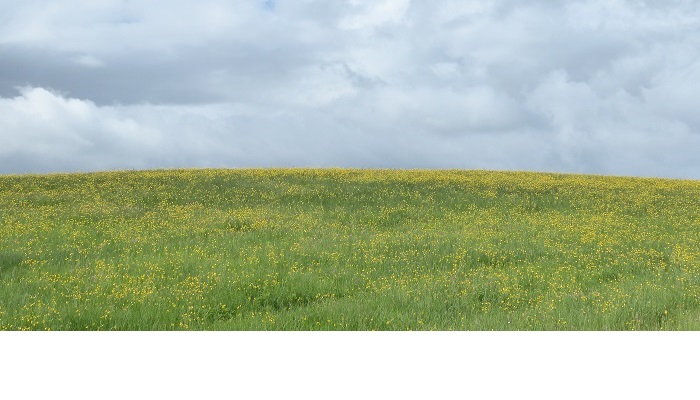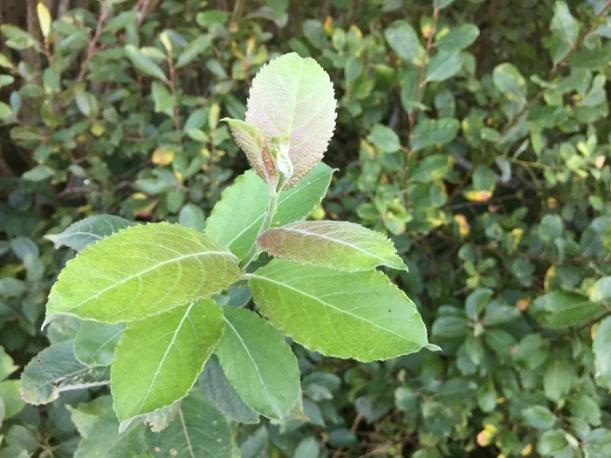08 October 2021
How to improve the biodiversity value of your forest – Part 2

In the second of a two-part series of articles, Steven Meyen, Teagasc Forestry Development Officer talks about how to improve the biodiversity value of your forest. He advises on tree species, open spaces, underutilised areas and interconnectivity between habitats here.
Caption: Flora and fauna need wooded areas to travel safely across the landscape. Photo: Teagasc.
In part 1 of this article, I looked at the importance of keeping browsing animals out, retaining and creating deadwood and to encourage ‘weeds’. In part 2 of this article, I will look at the importance of tree species, open spaces, underutilised areas and the all-important interconnectivity between habitats.
A few simple management interventions can make a big difference!
Tree species
Regardless if you have a commercial timber plantation or a broadleaf woodland, you as the owner can (and should?) make management decisions that will support increased biodiversity value.
Where you have some open space in or near your forest, you can introduce or favour particular tree species.

Caption: (Native) willows are often maligned but are ecologically very valuable and have many uses. Photo: Teagasc
Willows are particularly valuable for insects and birds while oaks support amazingly large insect, fungi and lichen populations. Both also provide great nesting cover.
Consider also planting trees that bear loads of berries such as rowan or elder: many birds depend on these berries as a food source. Look around you to see what is growing well spontaneously and then mimic what is happening naturally.
Open spaces
It is not all about trees! Open spaces adjoining a forest edge can play a very important ecological role. Why not make better (ecological) use of the open spaces that you have in and around your woodland?
Hedgehogs, bats, butterflies and many birds depend on flowers and grasses that will thrive in those sunny spots. Birds will use this sheltered area as a feeding and sunning site. Barn owls, sparrow hawks and others will use the open space for hunting. The neighbouring trees will provide shelter, nesting sites and lookout posts in return. This woodland edge can be improved by encouraging smaller, low growing shrubs and trees: they will attract even more wildlife, provide better shelter and result in more nesting sites for certain bird species.
Underutilised areas
Woodlands don’t have to be large to be of high biodiversity value. For instance, why not turn unused field corners into small, attractive woodlands? Doing this can make a big difference, especially if you can connect such field corners to existing hedgerows or wooded areas.
Try to mimic the structure of a native woodland: tree layer, shrub layer and herb layer.
First, plant the tree layer with saplings that will eventually develop into medium to large trees by putting clumps of the same species together. For instance, a clump of oak or Scots pine. They don’t have to be planted at the traditional two metres apart, you can space them much more widely apart.
You can follow this up by planting suitable trees of smaller stature in between. They won’t grow as tall and will eventually form the shrub layer underneath the larger trees. Such trees need to be able to grow in shade. Suitable trees include hazel or holly. A woodland herb layer (wood anemones, bluebells, etc.) will gradually develop.
It is also ecologically more beneficial if you create such a woodland over many years rather than planting all the little trees in one go. Because like this, you will not only create a layered vertical woodland structure but by using different species planted over many years in different locations, you will also create a wonderful horizontal structure.
Interconnectivity
It is not just about establishing an ecologically rich woodland. You can greatly increase the value of such a ‘wooded island’ by connecting it with other nearby habitats. Plants and animals must be able to travel across the Irish countryside. Fragmented habitats have only limited ecological value. But they can be made much more valuable by connecting them to other nearby habitats.
This is a particular problem in Ireland because of our very low forest cover. This requires most of our flora and fauna to depend instead on individual trees, hedgerows and linear woodlands to survive and move across the landscape. Large fields, poorly managed hedgerows or new houses in the countryside exacerbate this problem even further.
Where you can, try to (re-)connect habitats such as existing scrub woodlands or small tree groups (in field corners for instance) by linking into existing forests, hedgerows or riverbanks. Or maybe even consider creating such an important corridor yourself!
These are all very simple and easy to do measures but with a big impact!
Read How to improve the biodiversity value of your forest – Part 1 , where Steven Meyen, Teagasc Forestry Development Officer looked at the importance of tree species, open spaces and interconnectivity.
The Teagasc Forestry Department issues an article on a Forestry topic every Friday here on Teagasc Daily
Subscribe to: Forestry e-News
Keep up-to-date with the Teagasc Forestry Department here or follow them on Social Media here
